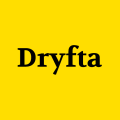Review Criteria:
TTLC2017 employs a blind peer-reviewed format. The following are criteria for acceptance of a paper for publication for the TTLC2017 Publication (Book) & the SEARCH Journal:
Standard and Criteria
Manuscripts that exhibit the following characteristics will meet the selection criteria for publication.
- Content: Original research with significant findings that contribute to the discipline that also command a general interest.
- Presentation: Systematic and well-organized prose whereby an argument flows and is easily comprehendable.
- Language: Simple, lucid and highly intelligible to a general intellectual audience. There should be minimal usage of specialized terms, jargon or technical language; if unavoidable, an explanatory note should be included.
Manuscripts that are not accepted for publication include those that are too elementary, poorly written and/or poorly organized, incoherent, too specialized in scope, unduly technical, or are excessively long.
TTLC2017 Publication (Book) & SEARCH Journal Peer-Review Process
- Submitted manuscripts goes through a review process that normally takes between 4 to 6 months.
- A blind review is practiced so that neither contributor nor reviewers are known to one another.
- The Editor-in-Chief will have the first initial review of the paper on its suitability and relevance in consultation with members of the Internal Review Panel. If appropriate, reviewers are identified again through consultation among the Internal Review Panel. If the review reports are unfavorable, the Editor-in Chief, in discussion with the Review Panel, decides whether an outright rejection is advisable or to seek another reviewer before a final decision is made.
- In the event of rejection, the author of the paper is notified. If the reviews are encouraging, the author is notified; the review feedback will be provided for the author to undertake revisions in line with the reviewers’ comments and suggestions.
- The revised paper when received by the Editor-in-Chief will again be evaluated to ensure that all issues raised by the reviewers have been addressed. If deemed necessary, the revised paper is forwarded to the reviewers for another reading. When all aspects are satisfied, the author is notified that his/her paper has gone through the review process and is now accepted for publication in a forthcoming issue of the TTLC2017 Publication (Book) or SEARCH journal.
|
Guidelines |
|
|
Language |
US English |
|
Formatting |
IMPORTANT: Do not include any identification info in the initial manuscript submitted so as to facilitate blind review process. |
|
Number of Words |
8000-10000 words |
|
Reference Style |
APA (American Psychological Association, 6th edition)
Refer to: http://www.apastyle.org http://blog.apastyle.org/
Reference List Entries in the list must be listed alphabetically except in the numbered system of sequential citation. The rules for alphabetization are:
|
|
Structure |
The suggested structure of an empirical research paper includes
|
|
Authorship and affiliation |
Authors attest that all persons designated as authors qualify for authorship and all those who qualify are listed. Only appropriate co-authors should be included on the paper, and all co-authors have seen and approved the final version of the paper and agreed to its submission for publication. |
|
Title |
|
|
Abstract |
|
|
Keywords |
Provide 3–5 specific and suitable keywords related to the manuscript.
(Keywords facilitate the retrieval of articles by search engines and will be used for indexing purposes, therefore do not use general terms.) |
|
Sources |
If you copy illustrations and figures from other works, you must obtain permission from the copyright holder (usually the original publisher) for both the print and online format.
|
|
Images, Illustrations, Tables, Photos and Other Supplementary Materials |
Authors are welcome to submit digital supplementary materials, e.g., figures, images, maps, diagrams, photos, etc., together with their manuscript so long as they have appropriate permission from the copyright holder.
Figures Name your figure files with your name, "Fig", and the figure number, e.g., Miller-Fig1.eps.
Figure Lettering
Figure Captions and Numbering
Illustrations Illustrations submitted should be as separate digital files, not embedded in text.
The files should follow these guidelines:
Tables Tables must be prepared using MS Word only and fully editable with the same software. They should follow the following guidelines:
|
|
Proofs and Publication |
Proofs, prior to final publication, will be sent to corresponding authors via email. To avoid delays in publication, proofs should be checked immediately for typographical errors and returned as instructed in the proof e-mail. |
|
Copyright Policy |
|
|
Technical terms |
|

